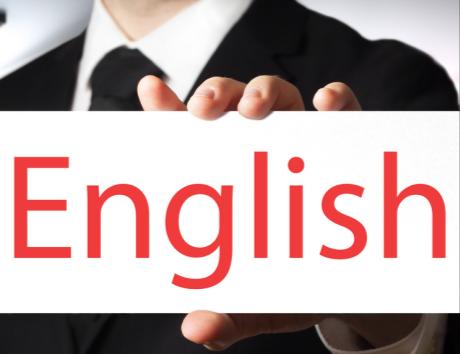How to Write a CV in English
Whether you want to apply for a job in an English-speaking country or a job where English is required, you’re going to need an English CV. Preparing your CV in English doesn't have to be complicated. An English CV is not very different in terms of structure from most European CVs. We’re here to answer any burning questions you may have about the structure, content and qualifications.

CV, an abbreviation for 'Curriculum Vitae,' is a comprehensive document that highlights your professional accomplishments and experiences. In English, it translates to 'course of life.' A well-crafted CV serves as a summary of your qualifications, skills, education, and work history, providing employers with an overview of your professional profile.
Having an English CV can open multiple doors worldwide. Most major companies operate in English. Sending your CV in English shows you understand the language well enough to use it in a professional setting.
The structure of an English CV
As with many CVs, a CV in English is typically between one and two A4 pages long. When applying to a US company, your resume should not be longer than one A4 page in length.
Sections are usually structured in reverse chronological order, as follows:
- Personal statement or profile
- Work experience
- Education
Note that the ‘Work Experience’ and ‘Education’ sections can be swapped around, if you’ve just left education or you’re still a student.
It’s important to note that dates can be written in English in any of the following ways, depending on the country where the employer is located:
- July 14, 2021 (US and Canada)
- July 14th, 2021 (US)
- 14th July, 2021 (UK and Ireland)
- 14 July, 2021 (UK, Ireland, Canada, New Zealand and South Africa)
What to include
While there are some differences between an English-style CV and an American resume, the following sections are usually included:
Personal and contact information
Write your name as the heading of the CV. Follow with your address, email address and telephone number. Include the international dialling code if you’re applying from a different country to the location of the job vacancy.
Personal statement
This is a brief, introductory statement of two or three sentences, where you highlight the skills, experience and achievements that are relevant to the role you’re applying for. This part of your CV can also be called a ‘career objective’; however, this is generally shorter and tends to focus on your career goals and ambitions.
Work experience
Starting with your most recent position first, include start and end dates, the name of your employer, as well as a mix of your responsibilities and achievements.
Use bullet points and omit pronouns, rather than using ‘I’ sentences, e.g.
Managed a team of five content creators to publish 10 blog posts on a monthly basis.
If you can quantify the results you achieved, this is even better. Quantifying your results could mean adding sales figures, awards, key performance indicators, customer feedback or comments from appraisals.
As you can see from the sentence above, the simple past is used to describe roles. However, if you’re currently in a role, use the present tense or the present continuous tense:
- Develop campaigns (present)
- Developing campaigns (present continuous)
Education
Mention any degrees and diplomas if you have them, specifying the year, the institution and the location. If your qualifications come from a non-English speaking country, you may need to include the names of their English equivalents for your qualifications to be understood.
If you’re applying for a job in academia or the courses you’ve taken are particularly relevant to the job you’re applying for, you may want to include details about your course modules. You could also mention dissertation topics or any awards, fellowships or grants you’ve won.
Other sections on an English CV
Training courses, certifications and internships are separate sections on an English CV.
While it’s not common to mention your hobbies and interests, it’s fine to mention them as long as they demonstrate relevant skills or experience. Including sections for the languages you speak (if applicable), a summary of your skills (soft and hard) as well as extracurricular activities (if you’re a student or recent graduate) is also a good idea.
Should you include references?
Generally, it’s not necessary to mention references or even include the sentence ‘References available upon request’.
In the early stages of the process, most employers won’t require these.
However, there are some English-speaking countries where employers might expect you to include references. In South Africa, it’s normal to include your references in the ‘comprehensive CV’. This is the CV that follows your ‘brief profile’ (comparable to a one-page American resume), where you go into detail about your work experience, education and skills. Also, in New Zealand, many employers will expect to see references on your CV, especially if most of your work experience is from overseas.
What to leave out
In many English-speaking countries such as the UK, Ireland, New Zealand and South Africa, including a photo is discouraged to protect yourself against discrimination.
There’s also no need to include personal details such as date of birth, place of birth, nationality, marital status or the number of children you have. However, in South Africa, you may need to include your identity number, but it’s best to check the job description or with the employer before sending such sensitive information.
How to write a CV for UK job applications
One common reason for needing to write an English CV, is to apply for jobs in the UK. Writing a CV for job applications in the UK combines some aspects of the US and Canadian resume structure, with other elements from European CVs. You’ll need a UK CV for job applications in England, Scotland, Wales or Northern Ireland, and most customs regarding structure and format are the same across all four countries of the United Kingdom.
The best format for UK CVs
The most commonly used UK resume format is the traditional or reverse-chronological structure. This emphasises your work experience over your skills and education. If, however, you’re applying for junior roles and you don’t have much work experience, most employers are also happy to receive a functional or skills-based CV format.
Sections to include in a CV for the UK
The sections of the British CV are the same as other English-speaking CVs. You should always include a CV header, a summary or CV objective, a work experience section, your education and a skills list. Optional sections to add to your UK CV include certifications and training, internships, languages, volunteer work and hobbies and interests. As with other English language CVs, it’s not typical to include your references in a UK CV.
Key tips for writing a UK CV
If you want to know how to write a CV for UK job applications, follow these quick tips:
- Avoid adding personal details: In the UK, the Equality Act 2010 guards against discrimination based on nine protected personal characteristics. The law applies to recruitment, with companies forbidden from using personal demographic information to influence their hiring decisions. As such, it’s best to leave personal details, such as your, age, gender, nationality or visa status, off your CV.
- Don’t add a photo: For the same reasons as above, employers don’t tend to expect applicants to include a personal photo with their CV.
- Keep it concise: Short and to-the-point is best. Aim for a length of between one and two pages of A4 in a clear, readable font and size. If you can fit all the necessary information into one side of A4, as you would with a US resume, then this is fine.
- Use simple language: keep your language as simple and accessible as possible and avoid unnecessary jargon, cliché and business speak.
- Follow a traditional or functional CV format: follow one of the two main CV structures: traditional/reverse-chronological or functional/skills-based. If you’re applying for a creative role, you could use as a creative CV format, but for most jobs, either reverse-chronological or skills-based is best.
- Have your CV proofread: if you’re not a native English speaker, have your CV proofread by a native speaker of British English. Errors in spelling and grammar, or a failure to use correct British English spellings and other customs, could undermine your chances.
Europass CV in English
If you’re applying for a job in Europe, you could also create a Europass CV. This is done on the Europass website.
Europass offers the possibility to add all kinds of documents that make applying within Europe easier, such as the Europass Language Passport with which you indicate your language skills and various supplements that describe your education level.
Beware of spelling differences
Beware of spelling differences between British and American English. Here are the main differences:
- The English ‘CV’ is a ‘resume’ in US English.
- Verbs can take an ‘ise’ or ‘ize’ ending in British English, but are always spelt with ‘ize’ in American English, e.g. ‘organise’ vs. ‘organize’.
- Verbs that end in ‘yse’ in British English are always spelled ‘yze’ in American English, e.g. ‘analyze’.
Some nouns that end in ‘ence’ in British English end in ‘ense’ in American English, e.g. ‘licence’ vs. ‘license’.
Our advice
Having a CV in English can increase your chances of getting a job and landing an interview. Rather than translating your CV word for word from your native language, try to create your CV in English yourself, using online dictionaries and with the help of sample CVs. You can then ask a native speaker or a professional translator to check your CV for wording, style and grammar.
To take out some of the guesswork, use a CV maker such as Jobseeker. Our CV templates provide everything you need to create an English CV, with important headings already translated, so all you have to do is fill in each section.
Impress employers with your CV
Step-by-step guidance to create a professional CV in minutes.


